Pope Francis has continued to break with tradition even in death, having requested before he died several changes to the ceremony and burial that accompany the passing of a pontiff.
But although the pope eschewed pomp, a number of other rituals surrounding his funeral will follow ancient traditions.
By Friday morning, more than 128,000 mourners had filed past Francis’s open coffin placed in front of the main altar of St Peter’s Basilica — at times praying, at times holding smart phones aloft — despite instructions not to — for a photo of the late pontiff laid out in red liturgical robes, a bishop’s pointed mitre and a rosary entwined in his hands.
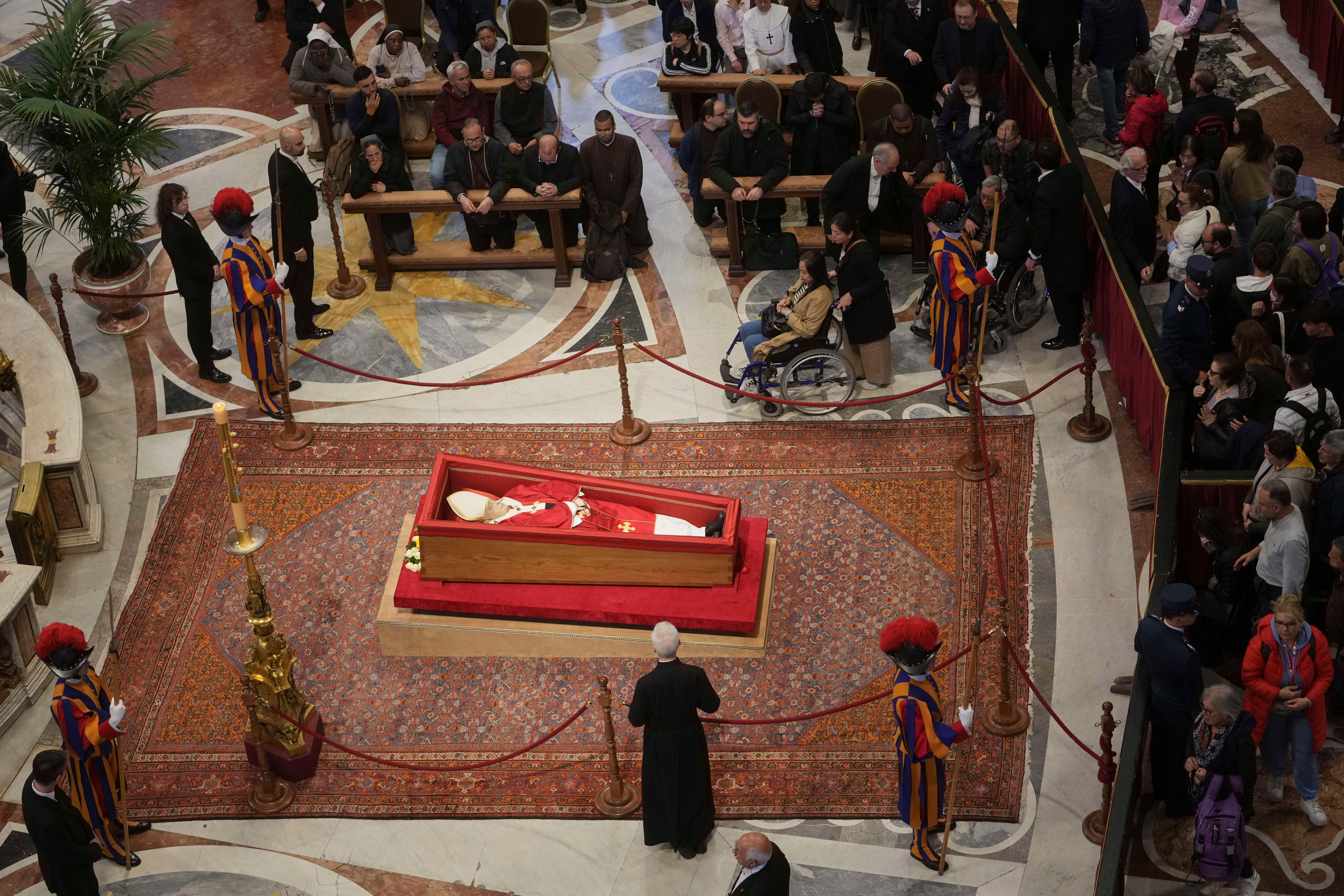
More vast crowds will gather for Saturday’s funeral, as well as more than 130 foreign dignitaries, among them 50 heads of state and 10 reigning sovereigns.
Follow updates from Pope Francis’ funeral
They include US president Donald Trump and first lady Melania Trump, Ukrainian leader Volodymyr Zelensky and first lady Olena Zelenska, the Prince of Wales, prime minister Sir Keir Starmer, French president Emmanuel Macron, Spain’s King Felipe VI, European Commission president Ursula von der Leyen, Giorgia Meloni, the Italian prime minister, as well as the most highly ranked members of the Catholic Church.
Below we look at how the service will unfold.
Sealing of the coffin
The three days of public viewing in St Peter’s Basilica will come to an end when Pope Francis’s coffin is sealed in a ritual on Friday evening.
The event will be conducted by American Cardinal Kevin Farrell, a trusted aide to Pope Francis and the current camerlengo – the official who runs the Holy See between the death or resignation of a pope and the election of the next one.
In one break from tradition, Pope Francis eschewed the previous three coffins made of cypress, lead and oak and will be interred in a simplified zinc coffin, inside a wooden casket.

The tomb has been prepared behind a wooden barrier within the basilica that he chose to be near an icon of the Madonna that he revered and often prayed before.
Photos released by the Vatican on Friday show the marble tombstone flat against the pavement, with the simple engraving in Latin that he requested in his last testament: “Franciscus”.
A bag of coins minted during Francis’s time as pope is placed in the coffin, along with a one-page account of his papacy. That account is read aloud by the master of liturgical ceremonies before being rolled up into a tube that is put in the coffin.
Senior members of the Catholic Church will attend, as well as the late Pope’s secretaries, Vatican News reports.
One ancient ritual already carried out was the breaking of the pope’s “Fisherman’s Ring” and lead seal so they cannot be used by anyone else.
The funeral service
The funeral mass, in St Peter’s Square, in front of the Basilica where his body has been lying in state, will begin at 10am local time (9am BST) with a choir singing introductory rites. His Reverend Eminence Cardinal Giovanni Battista Re, the dean of the College of Cardinals, will preside over the ceremony.
The late pope’s face is covered with a silk veil and his body sprinkled with holy water.
Mr Trump may be disappointed to find himself not at the front but in the third row back.
The Vatican has not released official details yet, but based on the funeral of John Paul II in 2005, Catholic royalty will be seated in the front row, The Telegraph reported. Next will come non-Catholic royals such as the Prince of Wales, who is attending on behalf of King Charles. World leaders and heads of state are likely to be next.
Some 220 cardinals, 750 bishops and priests are expected to be near the altar, and more than 4,000 other priests will be in St Peter’s Square.
The cardinal who presides over the funeral and other cardinals, bishops and officials will wear white damask mitres.
Patriarchs and cardinals will be distinguished from bishops by the purple of their liturgical garments.
Archbishops and bishops’ clothes include the alb, a white tunic, and a red chasuble, a type of cape.
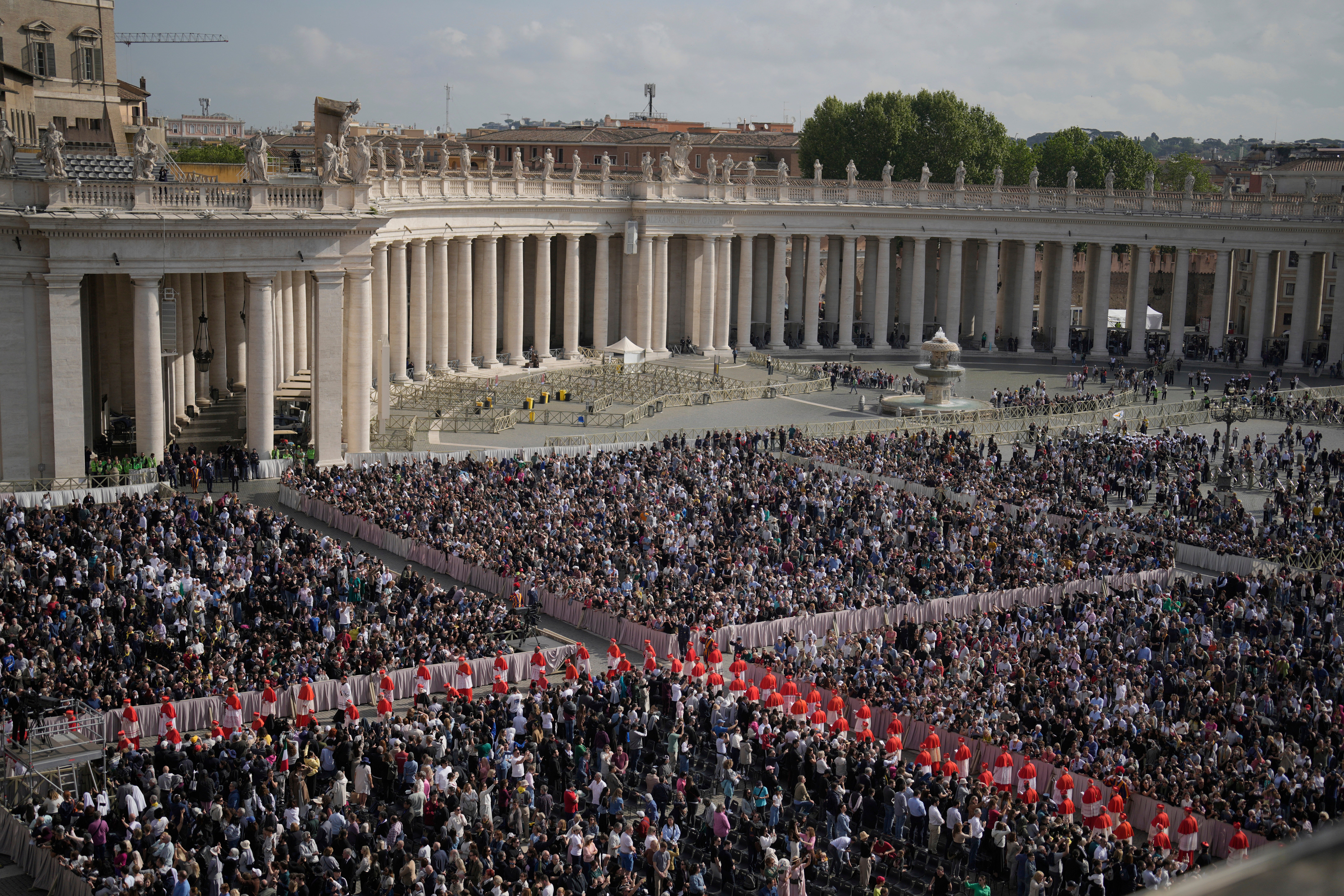
The service, expected to last two-and-a-half hours, will be mostly held in Latin. It follows the Ordo Exsequiarum Romani Pontificis, the Vatican’s official liturgical text for papal funerals, which was updated at Pope Francis’ request last year, according to EWTN, a Catholic television network.
The mass will include readings, and the homily will be followed by prayers in French, Arabic, Portuguese, Polish, German, and Chinese, before the Eucharistic liturgy, Holy Communion, and the Rite of Final Commendation, Vatican News reports.
“The celebration will be accompanied by the Choir of the Sistine Chapel,” the website says.
Cardinal Re will then sprinkle the coffin with holy water and incense.
At the end of the mass, the choir will sing in Latin: “May the angels lead you into paradise; may the martyrs come and welcome you and take you into the holy city, the new and eternal Jerusalem.”
When the service is over, the coffin will be carried through the “door of death” to the left of the altar at St Peters, while a 10-ton funeral bell tolls.
The presence of the overseas dignitaries and hundreds of thousands of mourners creates a logistical and security challenge for the Italian authorities.
Security around the Vatican has been tightened, with Italian authorities adding drones to foot and horse patrols along routes to St Peter’s Square.

The Swiss Guard, the Vatican’s own army, have been protecting the pope’s coffin while lying in state but have been brought into commission to help protect the Vatican City and the square where crowds of tens of thousands will be assembled.
Although soldiers from the world’s smallest army are officially a purely ceremonial force and wear colourful medieval-style costumes, they have undergone training for the well rehearsed security operation.
The prefect of Rome, Lamberto Giannini, told a news conference: “I believe that the ‘security machine’ is ready,” but will remain flexible and “ready to reshape and above all transmit a sense of serenity.”
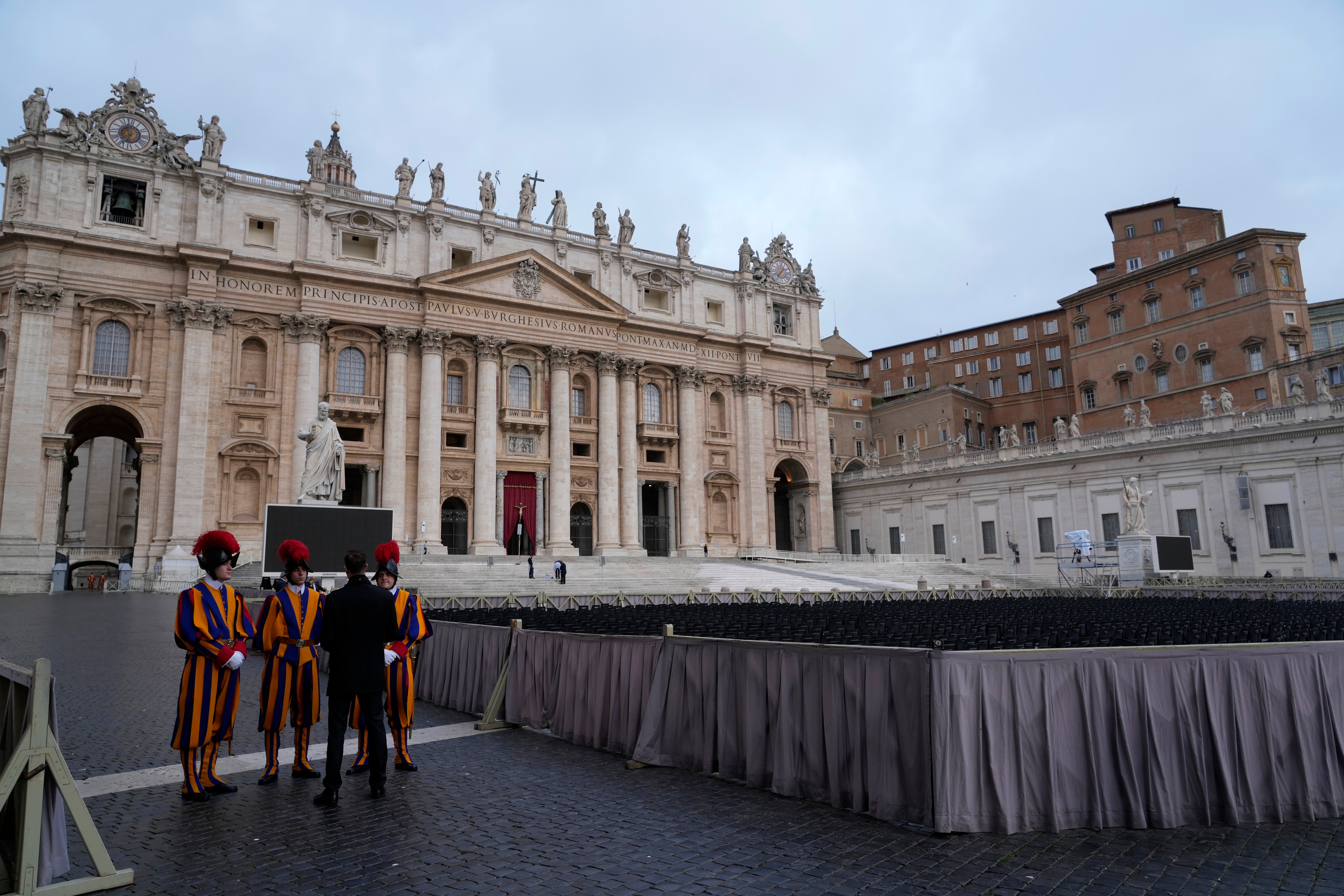
Security is not the only consideration. Italian news outlet Corriere della Sera reports a special waste taskforce of 400 staff and 150 vehicles to maintain public cleanliness in the square has already been organised, and pharmacy opening hours have been extended through Rome to boost available medical services.
The funeral procession and burial
Following the funeral, in another break with tradition, the coffin will be taken through the streets of Rome to an underground tomb in the basilica of Saint Mary Major, as per his instructions. The procession will be at walking pace to allow people to bid farewell to the pope on his final journey.
But that will not be Pope Francis’s final resting place. The largest break from tradition is the Pope’s request to be buried outside the Vatican grounds, the first pope to do so in 120 years.
Instead, he will be interred at the Basilica of Saint Mary Major (Santa Maria Maggiore) in Rome, which is about 4km from St Peter’s Basilica and which houses the bodies of seven earlier popes.
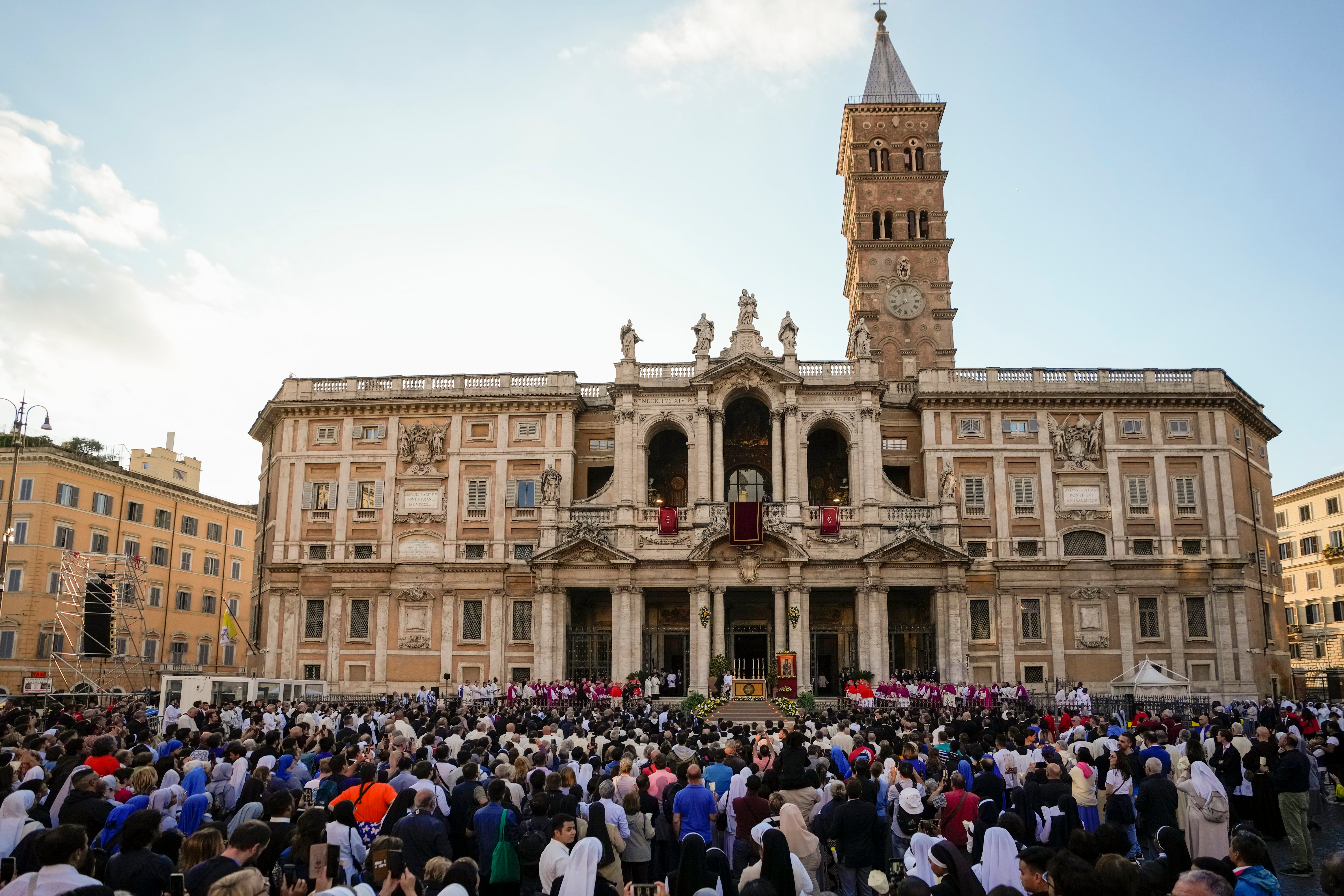
Cardinal Vincent Nichols, the leader of Catholics in England and Wales, said the open-air procession through the Italian capital would “enlarge the stage on which this is played out, and will give the people of Rome, especially, something that they will appreciate very deeply”.
The Vatican said that because the disadvantaged had a special place in the heart of Pope Francis, a group will wait on the steps of Saint Mary Major to pay their last respects before he is buried.
While the funeral mass and procession to Santa Maria Maggiore will be broadcast live around the world, that will end at the basilica.
Italian news outlet Corriere reports the burial will be a private ceremony, but people will be able to visit his burial place from Sunday morning.
In his will, Francis stipulated a simple burial “in the earth, without particular decoration”, marked only with his papal name in Latin: Franciscus.
Corriere says the stone used for the epitaph is marble from the north-west Italian region of Liguria.
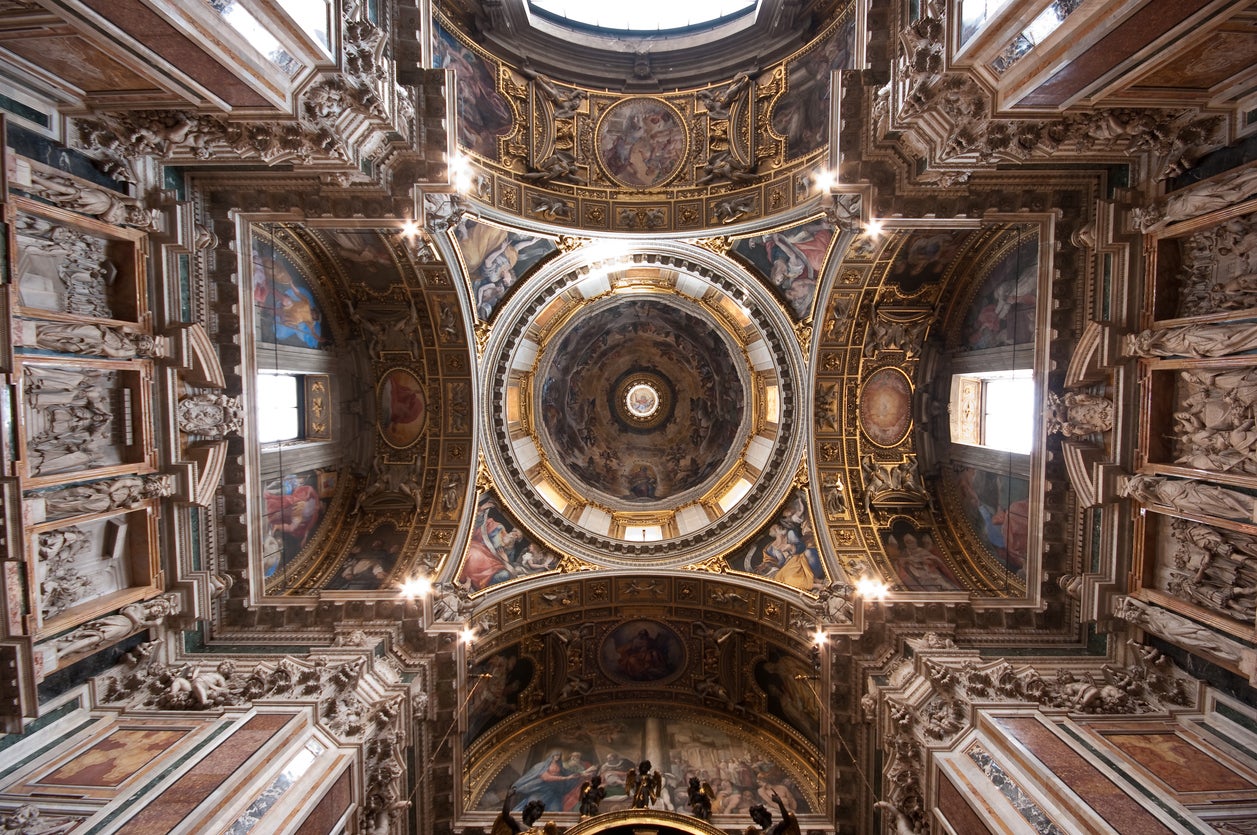
Nine days of mourning
Alongside the funeral on Saturday, nine days of mourning called the “novendiali” will also begin.
While the funeral mass is open to the public, services on the other eight days are open to different groups including one for employees and the faithful of Vatican City.
The last day of mourning is Sunday, May 4, ending with a service at 5pm.
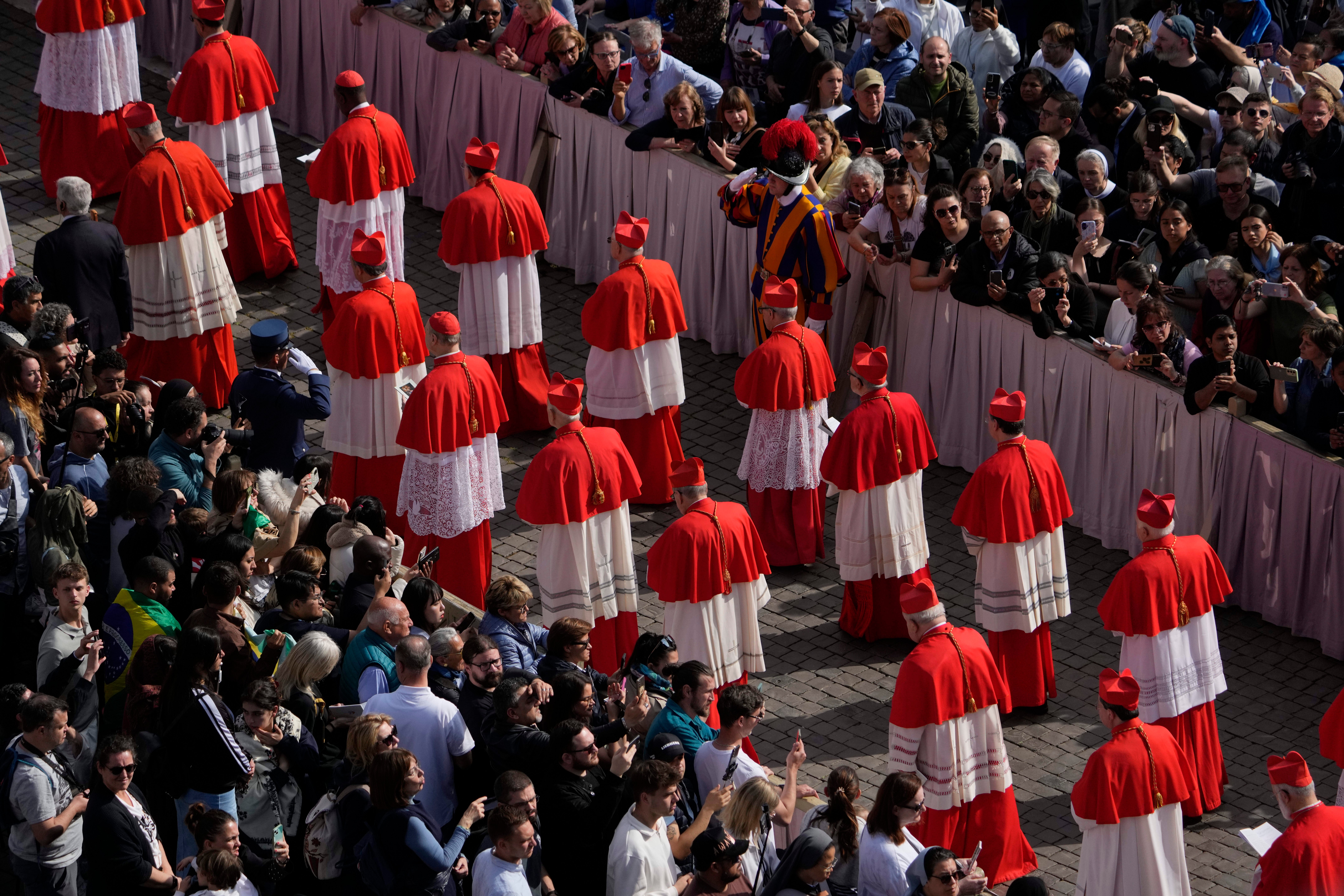
The process of selecting a new pope in a Conclave can begin
From May 5, the conclave to elect a new pope can begin.
In the conclave, the 133 cardinals of voting age (two cannot make it to Rome for health reasons) will gather inside Michelangelo’s exquisitely frescoed ceiling of the Sistine Chapel – home of all the Papal Conclaves since 1858, where they will whittle down candidates through successive rounds of voting.
An exact date for this will be decided after the funeral. French Cardinal Jean-Paul Vesco, arriving for the cardinals’ meeting on Thursday, said they were not meeting for the conclave yet.
“For the moment I do not believe the cardinals are saying ‘who will be the next?’. For the moment we are here completely for Francis.”
The conclave is secretive. The cardinals are forbidden from communicating with the outside world, and the gathering begins and ends with ritual words in Latin: “Extra omnes” or “Everyone out”, expelling all but voting cardinals. A two-thirds majority is required to become pope, and after the ballot, the victorious cardinal utters, “Accepto” or “I accept”.
With additional reporting from Associated Press



